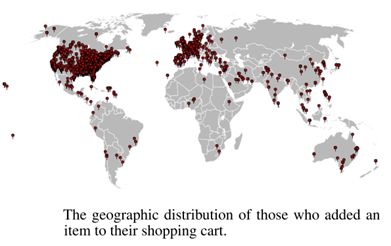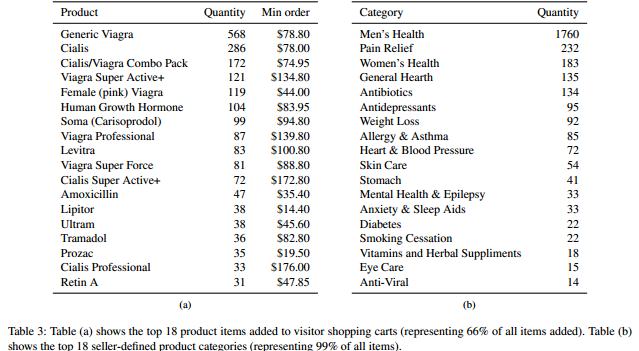Just how profitable is spam? Who’s buying the counterfeit pharmaceutical items advertised so heavily in a huge percentage of the spam campaigns currently circulating in the wild?
According to a newly released report by the University of California at San Diego, although hundreds of thousands of people visit the fraudulent pharmaceutical scam sites, only a small percentage of them is actually purchasing the counterfeit pharmaceutical items.
In this particular case, the United States leads with 72% of total purchases from fraudulent pharmaceutical sites.
More details:
According to the report, the following countries were most commonly observed in the pre-purchasing and post-purchasing scenarios:
- United States – 517,793 visits, 3,707 Cart additions, 0.72% of them added a product
- Canada – 50,234 visits, 218 Cart additions, 0.43% of them added a product
- Philippines – 42,441 visits, 39 Cart additions, 0.09% of them added a product
- United Kingdom – 39,087 visits, 131 Cart additions, 0.34% of them added a product
- Spain – 26,968 visits, 59 Cart additions, 0.22% of them added a product
- Malaysia – 26,661 visits, 31 Cart additions, 0.12% of them added a product
- France – 18,541 visits, 37 Cart additions, 0.20% of them added a product
- Germany – 15,726 visits, 56 Cart additions, 0.36% of them added a product
- Australia – 15,101 visits, 86 Cart additions, 0.57% of them added a product
- India – 10,835 visits, 17 Cart additions, 0.16% of them added a product
- China – 8,924 visits, 30 Cart additions, 0.34% of them added a product
- Netherlands – 8,363 visits, 21 Cart additions, 0.25% of them added a product
- Saudi Arabia – 8,266 visits, 36 Cart additions, 0.44% of them added a product
- Mexico – 7,775 visits, 17 Cart additions, 0.22% of them added a product
- Singapore – 7,586 visits, 17 Cart additions, 0.22% of them added a product
So far, Viagra remains the most popular item purchased through the pharmaceutical sites, with their operators earning a revenue every time they resell an item part of the pharmaceutical scam affiliate network. In this particular case that’s GlavMed.
- Go through a related post detailing a Web contest launched for the pharmaceutical affiliate network RX-Partners.
The business model for spamming is clearly a profitable market segment within the cybercrime ecosystem. With thousands of malware-infected hosts ready to spamvertise billions of emails, fresh databases of harvested emails, next to the fact that end and corporate users continue clicking on links found in spam emails, spam volumes will continue to grow.
From another perspective, in the long term, spamming will be all about the migration from mass marketing, to targeted market propositions, using geolocated databases of freshly harvested emails addresses, combined with localized messages targeting a specific audience using their native language in an attempt to further increase the conversion — visitor to customer — rate of visitors.
You can find more about Dancho Danchev at his LinkedIn Profile. You can also follow him on Twitter.








